How to Grow and Care for Squirting Cucumber
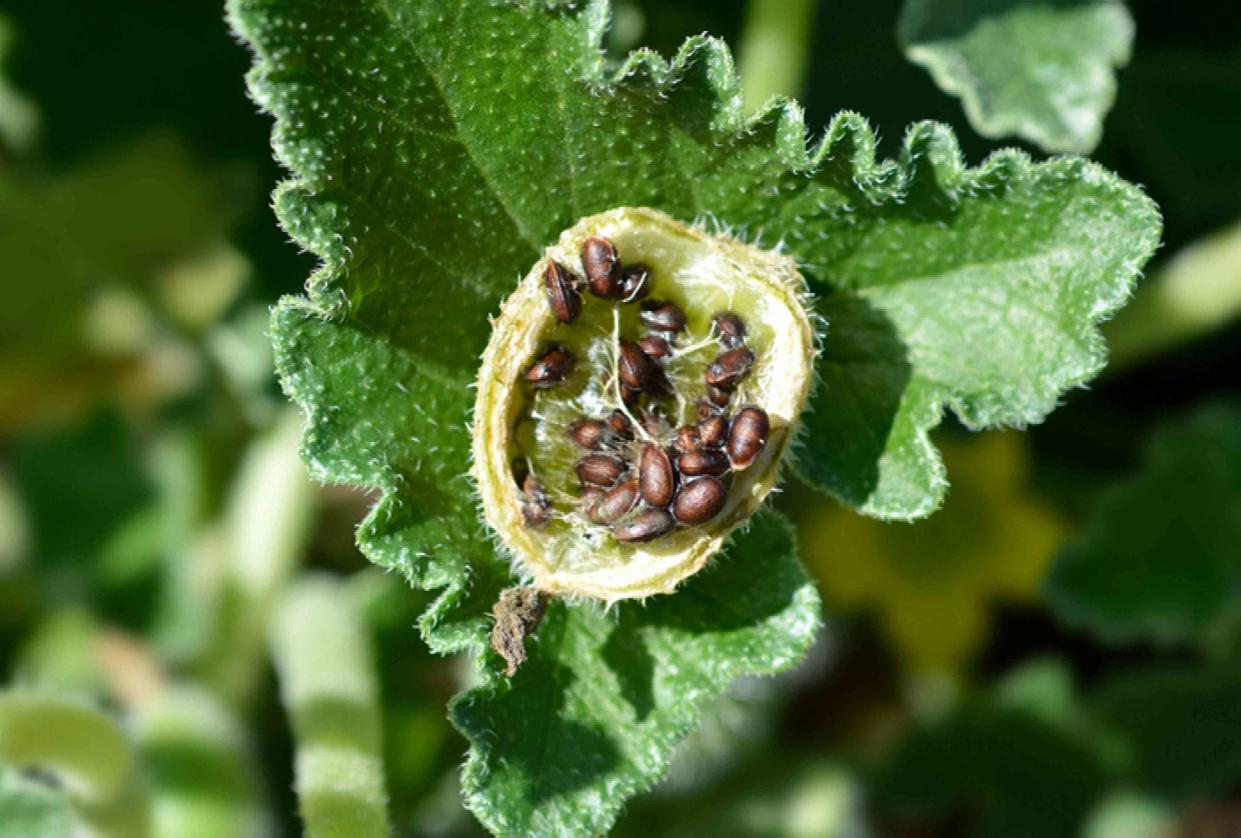
The Spruce / K. Dave
Reviewed by Mary Marlowe Leverette
The squirting cucumber, or exploding cucumber, piques curiosity by its name alone. It is the only plant in the Ecballium genus and gets its unique name from its explosive, squirting fruits. When ripe or disturbed, the two-inch prickly fruits, which resemble cucumbers, burst off the vine and spew mucilage-covered seeds up to 20 feet away. Native to the Mediterranean, you may see these perennial fast-growing members of the gourd family on roadsides or in waste areas. They are rapid spreaders thanks to their clever seed-spreading fruits and are often considered weeds. The showy display of bursting fruit follows yellow bell-shaped flowers and can be observed during the late summer months.
Squirting cucumber is usually planted from direct-sown seeds in the spring. It is a fast-growing but fragile vine covered with wrinkled, bristly leaves that will produce flowers and fruit in its first year. The plants contain elaterium, a drug that has medicinal properties when properly refined but which is quite toxic to humans and pets in unrefined form. The "cucumber" fruit of this plant is decidedly non-edible.
Common Name | Squirting cucumber, exploding cucumber |
Botanical Name | Ecballium elaterium |
Family | Cucurbitaceae |
Plant Type | Perennial, vine |
Mature Size | 12–18 in. tall, 1–3 ft. wide |
Sun Exposure | Full |
Soil Type | Moist, well-drained soil |
Soil pH | Acidic, neutral, alkaline |
Bloom Time | Summer |
Flower Color | Yellow |
Hardiness Zones | 9-11 (USDA) |
Native Area | Europe, Mediterranean |
Toxicity | Toxic to humans, toxic to pets |
Squirting Cucumber Care
Squirting cucumber is not a particularly attractive plant, but it is grown as a curiosity for those intrigued by the forceful expulsion of seeds when the ripened fruits burst open. If you decide to grow this fascinating but toxic vine, wear protective equipment such as gloves and safety glasses to prevent any skin or eye irritation from occurring from unexpected seed explosions when handling the plant. Plant in an area out of reach of children and domestic animals.
If you would like to grow this plant in your garden, keep in mind that it can spread rather quickly. Its creeping vines can sprawl out as wide as three feet, and its explosive seed pods may cause new squirting cucumber plants to pop up as far as 20 feet away from the parent plant.
Though it is a vining plant, squirting cucumber does not have tendrils and is grown as groundcover rather than climbing upward.
Although Ecballium elaterium is not included on official lists of invasive plants in North America, it is regarded as dangerously invasive in many other regions of the world, including many that have very similar growing conditions to North America. Be cautious if you choose to grow squirting cucumber, keeping an eye out for volunteer plants that spring up when seeds get flung as much as 20 feet from the parent plant. The potential for unwanted spread is most serious in regions where the plant is perennial, zones 9 to 11.
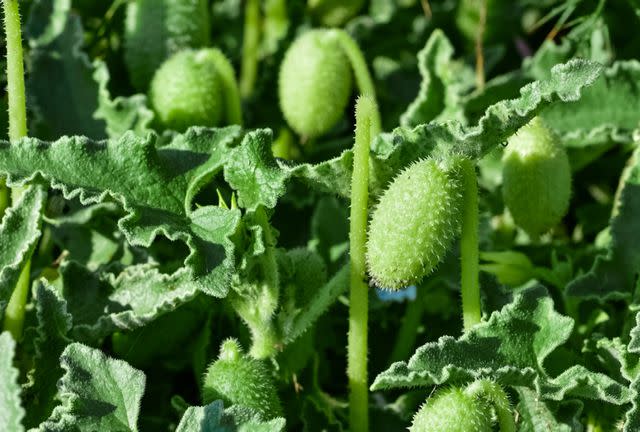
The Spruce / K. Dave
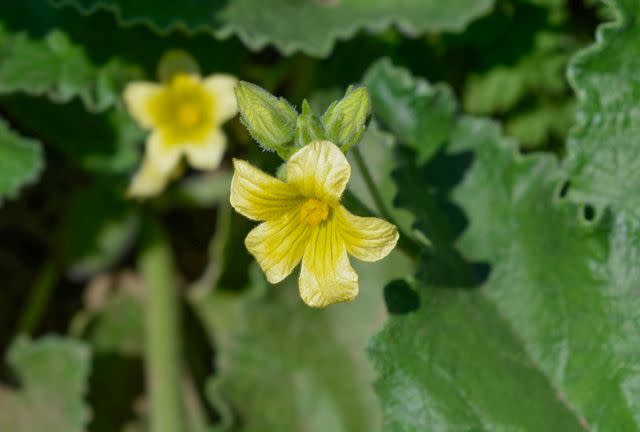
The Spruce / K. Dave
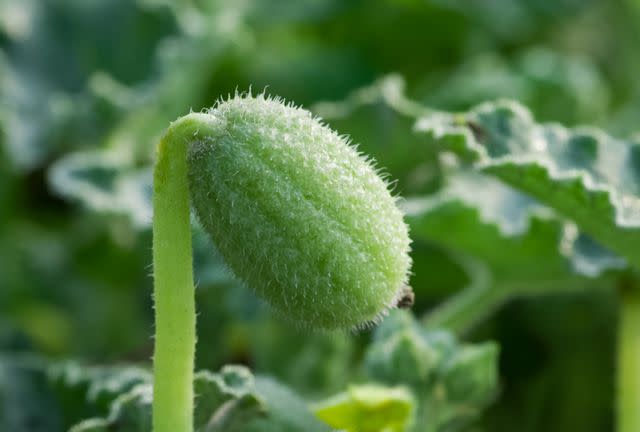
The Spruce / K. Dave
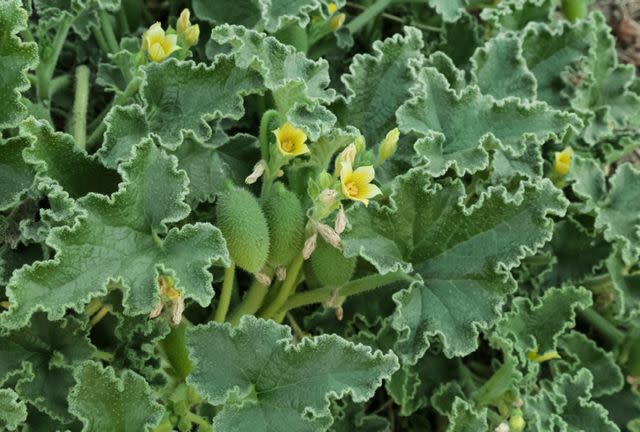
The Spruce / K. Dave
Light
Squirting cucumber demands full sun to grow well. Shady conditions will cause leggy, sparse plants and fewer flowers and fruits.
Soil
Squirting cucumber grows best in rich soil, but it has excellent tolerance for poor, even rocky soils. It is often found growing wild in areas with very poor, disturbed soils, such as construction sites. These plants are not picky when it comes to soil pH, doing equally well in mildly acidic, neutral, or mildly alkaline soils.
Water
This plant has average to low water needs. It will thrive on the typical "one inch per week" rule. It does not mind short periods of drought, such as is common in its native Mediterranean habitat. In areas that get some rainfall every week or two, additional watering is not necessary.
Temperature and Humidity
This unique plant is native to the Mediterranean and it thrives as a perennial in USDA hardiness zones 9 to 11. Squirting cucumber prefers dryish air, and humid winters may kill the plant. High humidity may cause fungal diseases.
Fertilizer
No feeding is necessary for this plant unless the soil is extremely barren.
Propagating Squirting Cucumber
Because of the inherent dangers of being squirted by the fruits, it is most common to propagate these plants by simply transplanting the volunteer plants that pop up in the spring after the fruits burst and scatter their seeds in the soil the previous year:
In the springtime, watch the garden carefully for small volunteer plants sprouting up in the area around the parent plant. It is common for the seeds to overwinter in the soil, then sprout up in the spring.
When the first set of true leaves appears, carefully dig up the plant and transplant it to the desired garden location.
Water the new plant consistently until established.
How to Grow Squirting Cucumber From Seed
If starting plants from seeds, simply sow them in the garden in the spring after all danger of frost has passed. The seeds will easily germinate and sprout, growing quickly into flowering plants in their first year.
Potting and Repotting Squirting Cucumber
Though it is not common, container culture is possible for squirting cucumber. Any pot material will do, provided it is well-draining. The growing medium needs to be fast-draining and able to dry out quickly—a blend of potting mix and sand or perlite will work nicely. Rather than worrying about repotting, it's more common to discard the plants at the end of the growing season and start over with new ones the following spring.
Overwintering
In colder regions where squirting cucumber grows as an annual, simply pull the plants from the ground and discard them at the end of the season (while taking precautions not to contact juices of squirting fruits).
In areas where it grows as a perennial, reduce watering for the winter months, as damp cold can kill these plants.
Common Pests and Plant Diseases
Squirting cucumber can be visited by a variety of common garden pests, such as aphids. They are rarely fatal but can be treated with horticultural oil.
These plants can also be stricken with viruses or fungal diseases such as powdery mildew. Virus-stricken plants should be removed and destroyed. Powdery mildew, while disfiguring, is not very serious. It can be treated with spray fungicide if you wish.
How to Get Squirting Cucumber to Bloom
This plant's yellow bell-shaped flowers normally appear from June to August. Failure to bloom is usually because the plant is not getting enough sun or is suffering from an extended drought.
Common Problems With Squirting Cucumber
These plants are generally trouble-free, but they are not very showy and gardeners sometimes grow tired of the novelty (and potential hazard) of the squirting fruit. And the volunteer seedlings that spring up as much as 20 feet away can create an annoying maintenance task. Therefore, it's not unusual for gardeners to give up on this plant after a couple of years, opting instead for a more ornamental and non-threatening groundcover plant.
Frequently Asked Questions
Isn't this plant used in folk medicine?
The squirting cucumber was historically used (with great caution) as an herbal remedy for dropsy. But this plant is no longer popular for such uses, due to the harsh reactions it can cause in the body. It acts as a strong purgative and even in small doses, it may cause digestive upset, diarrhea, hemorrhaging, and kidney problems. In large doses it is fatal.
How can I get rid of this plant?
If the reputation for toxicity (or its rather mundane appearance) causes you to want to eliminate this plant, removing it is easy, though some care needs to be taken. Before attempting, be sure to wear good gardening gloves and eye protection. When you are ready to remove the plant, simply uproot it and discard it in a sealed bag. Removal is best done early in the growing season before the fruits ripen and swell with internal pressure.
How can I use this plant in the landscape?
This is not an especially attractive plant, but it is sometimes used as a summer ground cover for sunny dry areas, and it can be planted to disguise the base of a low fence. It is sometimes trained to grow up a supporting trellis, fence, or wall.

